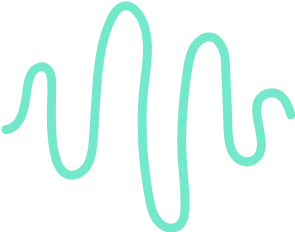Do your team meetings tend to drift off course, and fail to address key issues?
That’s where the Level 10 Meeting comes in—a proven, structured meeting format that helps leadership teams stay on track.
In this article, we’ll give you a structured template to implement this approach in your leadership meetings.
What is a Level 10 Meeting?

A Level 10 Meeting (L10) is a powerful, structured meeting format that helps leadership teams stay aligned, solve issues effectively, and maintain a steady focus on their most important goals.
It's a key component of the Entrepreneurial Operating System (EOS), which aims to improve how businesses operate through simple yet effective practices.
The name "Level 10" comes from the practice of participants rating the meeting on a scale from 1 to 10 at the end. A score of 10 means the meeting was highly productive and worthwhile—the kind every team wants to have.
Level 10 Meetings are designed to be held at the same time and day each week. They are strictly limited to 90 minutes, and every minute is accounted for, making sure the discussion is focused and efficient.
Each meeting follows a specific agenda that prioritizes the team’s biggest challenges and helps members hold each other accountable for key deliverables. This structure helps eliminate wasted time, keeps everyone aligned, and ensures that important issues are addressed rather than pushed aside.
The agenda for a Level 10 Meeting includes several distinct segments :
- A quick segue, where everyone shares some good news to set a positive tone.
- A scorecard review
- A check on progress toward quarterly goals (called "Rocks"),
- A review of any customer or employee headlines.
- "IDS" (Identify, Discuss, Solve) section, where the team works together to identify issues, discuss their root causes, and solve them.
- A recap of to-dos and a quick rating from participants on the effectiveness of the meeting.
Level 10 Meeting Template

A well-structured template guide you through running an effective Level 10 Meeting. Below, you'll find an easy-to-use template that you can personalize and copy/paste for your own meetings.
- Meeting Details
- Date: [Insert Date]
- Time: [Insert Time]
- Facilitator: [Insert Name]
- Scribe: [Insert Name]
- 1. Segue (5 minutes)
- Purpose: Set a positive tone for the meeting.
- Each participant shares a piece of good news (personal or professional) to start the meeting on a high note.
- 2. Scorecard Review (5 minutes)
- Purpose: Review key metrics to ensure the team is on track.
- Go over the 5-15 most important metrics. Each metric owner states whether they are "on track" or "off track." Any off-track items are moved to the Issues List for discussion later.
- 3. Rock Review (5 minutes)
- Purpose: Check in on quarterly goals (Rocks).
- Each Rock owner provides an update: "on track" or "off track." Off-track items are added to the Issues List.
- 4. Customer/Employee Headlines (5 minutes)
- Purpose: Share important news related to customers or employees.
- Team members share any notable updates, whether positive or negative. Positive updates are celebrated, and issues are moved to the Issues List for later discussion.
- 5. To-Do List Review (5 minutes)
- Purpose: Review action items from the previous meeting.
- Go over each to-do item. Mark items as "done" or "not done." Any unfinished items are carried over or added to the Issues List.
- 6. IDS (Identify, Discuss, Solve) (60 minutes)
- Purpose: Address and resolve the most important issues facing the team.
- Identify: List out the issues that need attention.
- Discuss: Prioritize the top 3 issues and have an open discussion to get to the root cause.
- Solve: Develop actionable solutions and assign responsibilities to resolve the issues.
- 7. Conclude (5 minutes)
- Purpose: Wrap up the meeting and ensure alignment.
- Recap any new to-do items and assignments.
- Each participant rates the meeting on a scale from 1 to 10. Discuss any feedback to improve future meetings.
Level 10 Meeting Agenda and Minutes with Noota
.webp)
Noota helps make Level 10 Meetings even more effective by automating note-taking and streamlining meeting documentation :
- Automated Recording and Transcription: With Noota, you no longer need to worry about taking detailed notes during meetings. Noota records the entire discussion and transcribes it in real-time, ensuring every word is captured accurately. This way, your team can focus on the conversation rather than on note-taking.
- Customizable Agenda Template: Noota allows you to customize your meeting agenda template to fit your specific needs. Whether it’s a project update or a strategic planning session, Noota’s flexible templates make it easy to adjust the agenda based on the type of meeting you’re running.
- Customizable Summary: Every meeting has different priorities. Whether you're working on a financial review, a project update, or a team brainstorming session, Noota allows you to customize your meeting summary to highlight what matters most for that particular session. This ensures that everyone leaves the meeting with a clear understanding of the key takeaways.
- Quick and Easy Sharing: Once the meeting wraps up, Noota makes it easy to share the minutes with your team. With just one click, you can send the structured report to all relevant stakeholders, ensuring everyone stays informed and aligned.
- Integrates with Your Daily Tools: Noota integrates seamlessly with the tools you already use, such as project management software, email, and calendars. This integration allows you to keep track of meeting outcomes and tasks without needing to switch between platforms, making the entire process more efficient.
Want to make the mot of your level 10 meetings ? Try Noota for free.

.png)

.webp)


.svg)
.svg)
.svg)